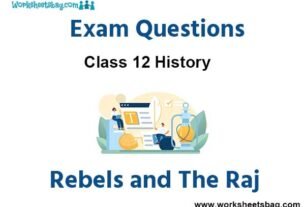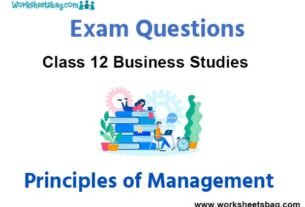Please see Non Competitive Markets Exam Questions Class 12 Economics below. These important questions with solutions have been prepared based on the latest examination guidelines and syllabus issued by CBSE, NCERT, and KVS. We have provided Class 12 Economics Questions and answers for all chapters in your NCERT Book for Class 12 Economics. These solved problems for Non Competitive Markets in Class 12 Economics will help you to score more marks in upcoming examinations.
Exam Questions Non Competitive Markets Class 12 Economics
MCQs
Question. Which of the following is not the feature of an imperfect competition?
a) Large number of buyers
b) Single seller
c) Homogeneous products
d) Price maker
Answer
C
Question. A monopolist is a price
a) Acceptor
b) Taker
c) Giver
d) Maker
Answer
B
Question. In perfect competition, a firm earns abnormal profit when __________ exceeds the _____________?
a) Total cost, total revenue
b) Average revenue, average cost
c) Total revenue, total fixed cost
d) Marginal cost, marginal revenue
Answer
B
Question. In monopolistic competition, which of the following curves generally lies below the demand curve and slopes downward?
a) Marginal cost
b) Average cost
c) Average revenue
d) Marginal revenue
Answer
D
Question. In the case of a negatively sloping straight line demand curve, the total revenue curve is
a) A rectangular hyperbola
b) Convex to the origin
c) An inverted vertical parabola
d) Concave to the origin
Answer
C
Question. Cartels exist in
a) Oligopoly
b) Duopoly
c) Monopoly
d) Perfect Competition
Answer
C
Question. In monopolistic competition the goods are
a) Durable
b) Differentiated
c) Heterogeneous
d) Homogeneous
Answer :
B
Question. Which market have characteristic of product differentiation
a) Monopolistic competition
b) Oligopoly
c) Monopoly
d) Perfect competition
Answer
A
Very Short/Short Answer Type Questions
Question. Equilibrium price of an essential medicine is too high. What can be done to bring the price down only through market forces? Explain the series of changes that will occur in the market.
Answer : One possible step can be to reduce tax on medicine or subsidy which will eventually help to bring down the price and in turn increase the supply.
Demand remaining unchanged, a situation of excess supply will emerge which will lead to competition between sellers. This will lead to fall in price of the medicine.
Question. Explain the effects of a ‘price ceiling’.
Answer : Black marketing may be termed as a direct consequence of price ceiling. It implies a situation whereby the commodity under the government’s control policy is illegally sold at a higher price than the one fixed by the government.
It may primarily arise due to the presence of consumers who may be willing to pay higher price for the commodity than to go without it.
Question. Market for a good is in equilibrium. Demand for the good “increases”.
Explain the chain effects of this change.
Answer : ‘Given equilibrium, demand increases’, the chain effects of the change are as follows:-
1. Price remaining unchanged, excess demand emerges
2. This leads to competition among buyers causing price to rise
3. Rise in price causes fall or contraction in demand and rise or expansion in supply
4. The price continues to rise till the market is in equilibrium again at a higher price
Long Answer Type Questions
Question. Explain the implications of the following features of oligopoly market.
(i) Few firms
(ii) Barriers to the entry of firms
Answer : The implications are as follows:
1. When there are few firms in the market, this is called oligopoly. However, each firm is so big that it controls a specific consumer segment in the market.
It is so important that price or output policy of one firm directly affect the price and output policy of rivals. Hence, it is also not possible to draw a specific demand curve for an oligopoly firm. We have seen that oligopoly firms tend to form trusts and cartels with a view to avoid price competition in the market. In this way they enjoy monopoly profits. But this is very few in the overall market.
2. When there are barriers to the entry of firms, it is always more. These barriers are almost similar to those under monopolistic situations. Entry of a new firm is extremely difficult, but possible. These barriers can be natural like requirements of huge capital or operating at minimum average cost of artificial barriers like patent rights. They mainly prevent new entrants in the market.
Question. Distinguish between perfect competition and monopolistic competition
Answer : Following are the difference between perfect competition and monopolistic competition:-


